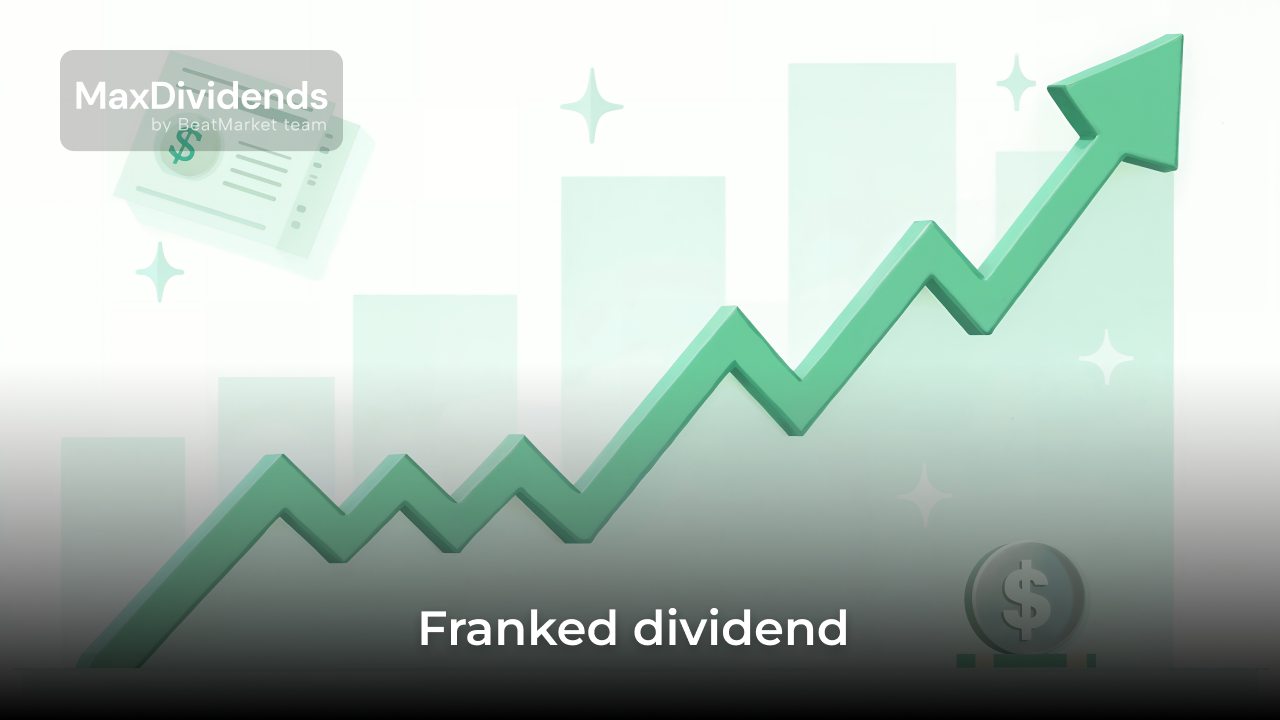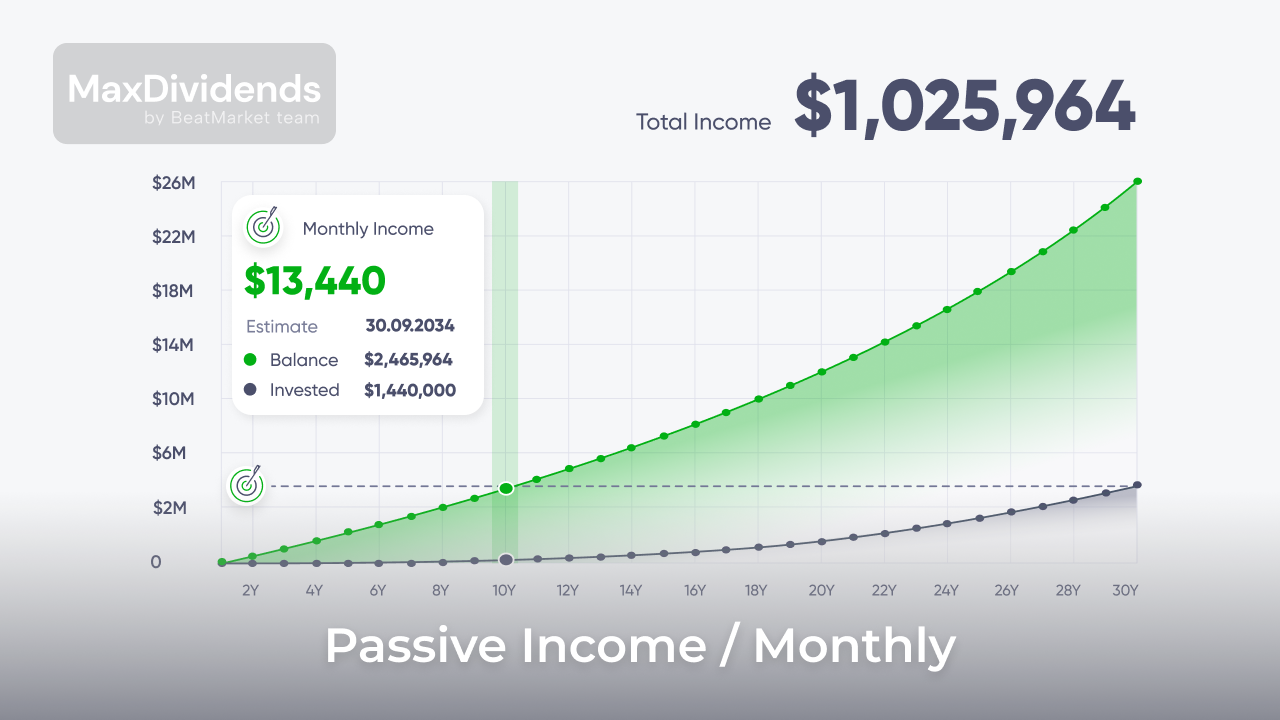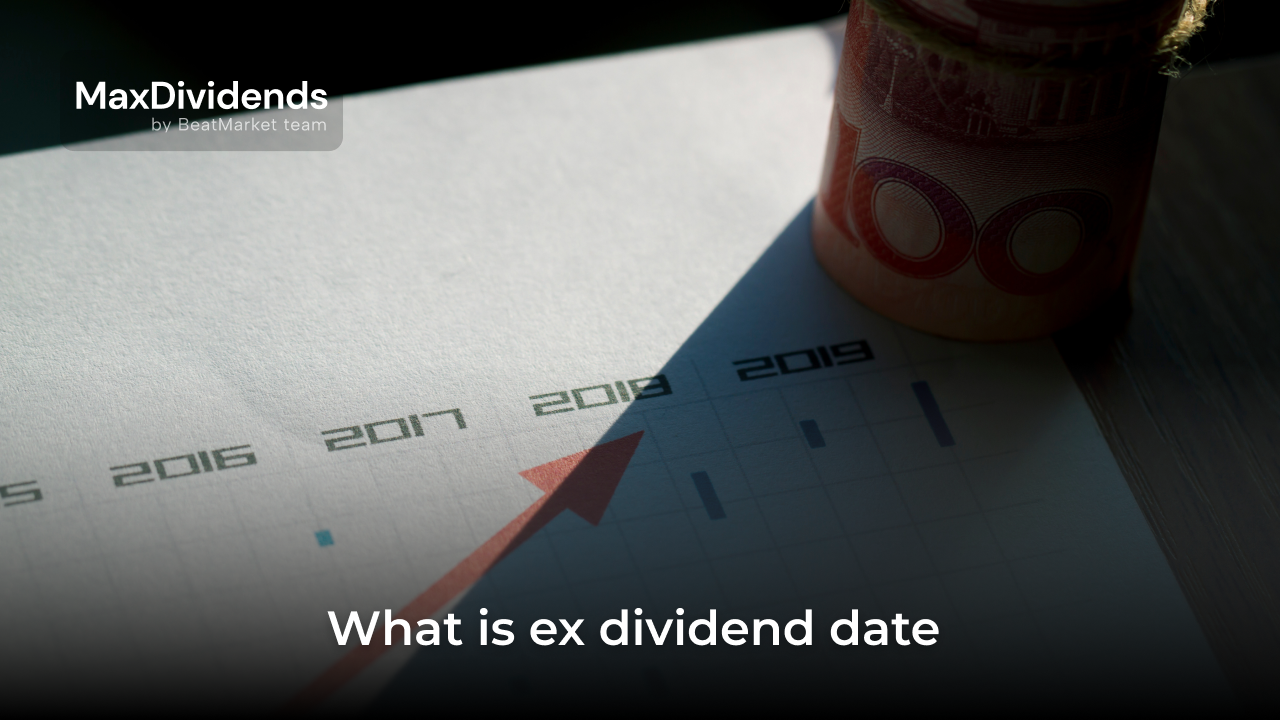Table of Contents
Portfolio Diversification For Beginners: What Is It And How To Do It Right
Choosing a diversification strategy is one of the first steps a beginning investor can take. It helps reduce losses when the stock markets are volatile. The optimal allocation of capital to different asset classes depends on the planned investment duration and individual risk tolerance.
The easiest way for beginners to compile a well-diversified portfolio is to buy ETFs and mutual funds. Experienced investors prefer to select stocks according to their views on how the stock market will develop over time.
What is diversification?
Portfolio diversification is an asset allocation strategy that is used to reduce investment portfolio risks.
Diversification is at the core of portfolio management. Its main goal is to moderate risks, not to maximize returns.
The ideal diversification strategy would prioritize assets whose valuation and performance have a negative correlation. But in reality, it is difficult to achieve due to the laws of the world markets, where many assets could be closely related in terms of risks and returns, influenced by the same macroeconomic conditions.
Why is diversification important?
Diversification is a fancy word for the eternal truth: “one shouldn’t put all eggs in one basket”.
For example, Alice bought shares in a company that she expected to make huge profits from. But, despite the great expectations, the business went bankrupt. As a result, Alice lost all her money, got evicted, and had to move back with her parents.
Meanwhile, Bob kept diversification in mind and invested in 10 different stocks. Among them were both promising companies in terms of growth and established companies that had already gained market share and were not showing explosive growth.
Only 1-2 out of 10 companies are likely to have solvency problems in 15–20 years. And the stock prices of the others will grow so much that they will cover the losses of the weaker assets.
But in Bob’s example, the investor may face a rare global stock market crisis in which prices of all his stocks will fall for a long time. Therefore, a well-diversified portfolio should include different asset classes immune to micro and macro risks.
In addition, the opposite scenario is also possible. If Alice’s expectations are met, she may earn way more investment returns than cautious Bob. Portfolio diversification is a way to reduce risk and escape massive drawdowns, but not necessarily to increase returns.
Diversification by asset class
When investors talk about diversification, they primarily mean investing in assets with different characteristics.
The best option is a combination of high-yield instruments and low-risk assets. Their proportions are determined by risk tolerance and investing horizons.
A well-diversified portfolio would include the following:
- stocks of companies from different countries and industries;
- bonds, both government and corporate;
- gold and other exchange-traded commodities (easiest to invest in through ETFs);
- other asset classes (e.g., cryptocurrencies, real estate in the form of REIT shares or one’s own apartment, etc.).
The main difficulty for a novice investor is that good diversification requires significant capital. It would take more than a thousand dollars to put together a portfolio of several stocks and bonds on your own.
Mutual funds and exchange-traded funds (ETFs) were created to solve this problem. By investing in them, an investor gets a stake in a large set of stocks or bonds.
Examples of portfolio diversification: the portfolio on the left includes assets from different classes, the second portfolio is a stocks-only allocation, but diversified by the capitalization of companies.
4 basic components of a diversified portfolio
To talk about the minimum level of diversification, you need to include four types of assets in your portfolio:
- cash equivalents;
- bonds;
- shares of companies from developed countries;
- equities belonging to emerging markets
Cash equivalents are short-term investments that include certificates of deposit (CDs), 6-month T-bills, and money market funds. They are usually used to store a safety cushion or to accumulate reserves for the next big purchase.
These assets can also serve you well during a stock market crisis. They have predictable returns and protect you from losing your money.
The disadvantage of certificates of deposit is that the investor loses access to capital for the duration of their validity. Money market funds provide constant liquidity. But they are not insured. In addition, there are risks of short-term drawdown, albeit not as severe as in stocks.
Bonds are another low-volatility investment. Most issues guarantee their holders a regular fixed income in the form of coupon payments.
During a bond’s life, its market price can rise or fall. But on a predetermined maturity date, the investor will receive an amount equal to its face value.
The disadvantage of investing in bonds is low profits. If you buy a paper with maturity of several years, there is a risk that its yield will not outrun high inflation.
The developed countries (the US and the European) stocks, are more profitable, but also riskier assets.
Investments in foreign stocks and emerging markets are even riskier. They are characterized by a higher dividend yield than most U.S. issuers. They also have higher growth prospects, as they are often undervalued.
Additional components of a diversified portfolio
Finding individual stocks for your portfolio requires good knowledge and takes a lot of time. Various funds can be an alternative.
Sector funds get their name because their managers select stocks based on their sector of the economy.
Different sectors of the economy have advantages at different stages of the economic cycle. Therefore, sector funds can be a handy tool to take advantage of during different phases of market development.
Funds invested in natural resources such as gas, oil, etc. are considered good protection against inflation. The net assets of such funds may include shares of extractive companies or futures and other commodity derivatives.
Buying shares of real estate investment trusts (REITs) is another investment option recommended for beginners who would like to build a diversified portfolio. The peculiarity of REITs is that they distribute 90% of their profits to shareholders. Therefore, buying these shares is a great way to provide yourself with passive income.
Buying shares of one of the ETFs isn’t enough to be well diversified. Although the net assets of funds include many different equities, they are usually all in the same asset class. Therefore, an investor must assemble a portfolio of many different ETFs and maintain an equally weighted ratio between them.
Asset allocation funds are a type of mutual fund. They suit people who don’t want to spend any time at all putting together a portfolio and rebalancing it. All of this will be handled by professional fund managers.
There are different types of asset allocation funds. For example:
- Assuming a return of funds by a certain date;
- Those that strictly maintain a given asset allocation;
- Those that seek to earn the maximum income, etc.
The first type is more often used for retirement savings. The others are also suitable for medium-term investments.
Reducing the impact of market volatility through diversification
The main objective of the portfolio diversification strategy is to reduce its one-time drawdown effects.
The figure below shows three hypothetical portfolio allocations and how they change their total value over 20 years of investing. The calculation is made without taking into account rebalancing and reinvestment.
As one would expect, the most aggressive portfolio, made up of 95% stocks, yielded the best results. The starting capital of the investor tripled. At the same time, the deepest drawdown reached almost 50% of the total portfolio value.
The average portfolio, which consisted of 50% bonds, showed rather modest results. The investor’s capital grew less than 2.5 times. But at the same time, the maximum drawdown was only 22%. Moreover, by adding gold and commodities, in some years this portfolio even outperformed the aggressive portfolio.
When using such calculation services, one should not forget that past results cannot guarantee future returns.
Diversification strategies
There are dozens of strategies that can be used to create a diversified portfolio. Listed below are the main ones. They can also be combined for optimal results.
By asset classes
Diversification theory states that the same factor affects different asset classes differently.
For example, an increase in key rates will cause the price of bonds to fall. At the same time, it is highly likely to cause a rise in commodity prices and contribute to an increase in REIT yields.
By industry
Investing in different types of businesses can offset industry risks.
For example, shares of companies in the airline and streaming platforms sectors and other online entertainment sectors reacted differently to the introduction of coronavirus restrictions.
By valuation
All stocks can be divided into two types: value stocks and growth stocks. Typically, value companies are well-known and established corporations that pay dividends. They are often undervalued in the current macro regime, which favors growth companies.
Such businesses do not show explosive growth rates; value stocks are unlikely to increase valuations several times over short periods. But if you manage to buy them a little cheaper than the “fair” price, it will be an excellent investment for many years.
Growth stocks are equities of companies whose businesses can expand exponentially. Sometimes high-growth stocks fall into this category as well. During bull market periods, the valuation and market capitalization of growth stocks rises quickly and can increase by leaps and bounds in a few years. Typically, growth companies are overvalued – the market pushes their stock prices higher and higher with little regard to fundamentals.
But such companies, for the most part, do not pay dividends. Therefore, it is difficult to make money investing in growth companies during bear markets. Another disadvantage is that younger businesses are fragile.
By market cap
Market capitalization is the value of all outstanding shares of the issuer. Companies are usually divided into large-cap, mid-cap, or small-cap businesses. There are also the terms mega-cap (above $200 billion) and nano-cap (below $50 million).
Small- and nano-cap companies are considered to have higher growth potential, as they are still at the beginning of their development and market conquest journey. And shares of large-cap companies are often called more reliable assets. Such businesses are more transparent, financially stable, and ready to pay dividends.
By risk levels
This investment portfolio strategy differentiates assets by risk levels. For example:
- government bonds are the most reliable asset;
- cryptocurrency is the riskiest asset;
- value stocks are typically associated with lower to medium risks.
By maturity
Almost always, maturity diversification comes into play when an investor buys bonds. By investing in fixed-income securities with maturity of 5–10 years, one is taking higher risks compared to short-term bonds.
If the Fed’s key rate goes up a lot, an investor can sell his long bonds at a loss. Their price will fall because bonds will be less profitable to own than other assets. The price of short-term bonds is less sensitive to key interest rate changes.
Also, investing goals and timing can play an important role when choosing to invest in trusted mutual funds, real estate leases, etc.
By country of origin
Exposure to companies from different countries helps reduce political risks. Factors adversely affecting one country’s economy may have little or no effect on another.
Plus, this type of diversification allows you to hold money in different currencies, which is also considered a good way to manage risk.
Few foreign stocks are directly available on the US stock exchanges. So, the best way to invest in emerging markets and foreign equities is to buy ETFs or invest in mutual funds.
By tangibility
Stocks and bonds are issued in book-entry form and stored inside the investor’s trading software. Moreover, they have growth and value potential only when the economy is functioning normally.
Therefore, many investors prefer to add alternative assets to their portfolios:
- residential homes and commercial real estate;
- physical gold, silver;
- fine art, collectibles, etc.
But such investments carry other risks. Sometimes they can be hard to sell or can be physically destroyed by hurricanes and floods, etc.
By exposure
It would take several hundred thousand dollars to create a well-diversified portfolio consisting of various asset classes. This amount is beyond the reach of most novice investors.
Exchange-traded funds (ETFs) and mutual funds come to the rescue. By investing in them, one receives a share in a large basket of assets that is rebalanced from time to time. The entry threshold may be several hundred dollars or fewer.
ETFs typically replicate an exchange index, such as the SP500, or give the retail investor access to investments in foreign markets, commodities, etc. By buying shares of several ETFs, you can obtain a diversified set of securities.
Mutual funds can also be part of an active investing strategy. More often than not, their managers are limited by investment policies and may invest investors’ funds in only one asset class.
But there are varieties of mutual funds that include securities of different classes and also change the asset allocation from predominantly risky to fixed-income investments as the return period approaches.
Buying shares of ETFs and mutual funds is the easiest way for a beginning investor to build a diversified portfolio.
How to diversify your investment portfolio
The best way to diversify your portfolio is to use mutual funds. To ensure that assets are allocated to different classes, you need to turn to different types of funds.
Open a brokerage account
The first step is to choose the type of account. For beginners, the best solution is an employer-sponsored 401(k) retirement plan. It allows you to automate deductions and get a tax break.
The second option is a Roth IRA at a brokerage, which allows you to get your retirement savings tax-free.
Choose your primary asset classes
After opening a retirement or investment account, you must select optimal asset classes that align with your financial goals. Recommended types of mutual funds to include in your portfolio:
- Large-cap fund – brings moderate returns with relatively low risk.
- Growth stock fund – higher returns than large-caps, risks also higher.
- Fund with an aggressive strategy – includes young companies with high upside potential, but also higher bankruptcy risks.
- International funds – diversification through foreign markets.
It is best to invest the same amount of money in each of these funds.
Add secondary assets
A portfolio consisting only of stocks remains risky, even with good diversification. A person with lower risk tolerance or a short investment time horizon would need additional asset classes to build a more balanced portfolio.
To mitigate risk, bonds and commodity funds, which rise in price as inflation increases, are added to the portfolio.
Dollar-cost averaging
An investor who has created a portfolio based on diversified funds should add a fixed amount of money to his account monthly or quarterly.
A person with an investment horizon of 2-3 years or more should do so regardless of the market stage or cycle. This will help average the price of securities owned. Statistically, this strategy is more profitable than trying to time the market.
Rebalance portfolio
The weight of each of the asset classes added to a portfolio changes differently with time. One of the rules of successful investing is to regularly bring asset allocation weights back to their original proportions.
This can be done by:
- Regularly funding your brokerage account and prioritizing purchases of the least appreciated securities;
- Partial sale of the most appreciated assets and distribution of funds to the laggards.
If there are significant changes in the stock market, it is wise to seek investment advice from a professional who can revise allocation priorities and portfolio weights.
Consider time in your diversification strategy
Investing involves risk – this is an invariable fact of life. The degree of risk that a particular person can afford is largely determined by his investment time horizon, financial goals, health, and family status.
For example, if we are talking about building retirement capital and your investment time horizon is 30–35 years, it is advisable to use riskier alternative investments, such as cryptocurrency, and balance them with long-term government bonds.
When planning your asset allocation, you should not forget your risk tolerance. If an investor realizes that he or she will have a hard time seeing a strong drawdown of the portfolio, he or she should reduce exposure to risky assets.
If it is a medium- or short-term investment horizon, such as saving up for a mortgage down payment that is planned to be made in the next 1–2 years, it is advisable to protect yourself from market volatility by buying bonds that will mature around that time and avoiding high-risk investments.
Diversification across platforms
Competent investors diversify their investments not only by asset class but also by place of storage.
For example, if a person decides to invest $400,000 in one bank, he may lose some of the money if the bank goes bankrupt. If an investor distributes his money to two banks, then one of his deposits of $200 thousand will be safer in case one bank goes bankrupt.
Plus, a person who has accounts in two banks will be able to withdraw her funds even if one bank has temporary withdrawal limits.
The same principle is valid for investment brokers, which give access to the stock exchange, and to cryptocurrency exchanges.
Pros and cons of diversification
Every decision has its positive and negative sides. Choosing one or another diversification strategy is no exception.
The pros of diversification are:
- protection from complete loss of capital;
- minimization of specific risks (related to a particular company, industry, or country);
- faster recovery from drawdowns (according to statistics);
- portfolio volatility reduction.
One asset class may react to the same news with a fall, another with a rise.
As a result, the total value of a diversified portfolio changes less than that of a portfolio made up of only one asset type. It is this fluctuation of the current value of all assets owned by an investor that is called portfolio volatility.
Cons of diversification:
- Lower returns (at least on a short to medium investment time horizon);
- waste of time and money on regular rebalancing;
- lower efficiency in a falling market.
During financial crises, almost all asset classes correlate more strongly with each other than in a bull market and lose value in sync. Cash becomes the best defensive asset in nominal terms, gold protects from currency depreciation.
Systematic Risk vs. Diversifiable Risk
The main purpose of using different asset classes is to minimize the risk associated with different assets. But it is impossible to get rid of it completely.
There are two types of market risks: systematic and nonsystematic (diversifiable). Only the latter can be reduced. Many types of risk fall into this category. The key ones are:
- Business – risks related to the nature of the company’s activities, poor management, and risky M&A deals.
- Financial – solvency and liquidity problems, regulatory risks, debt, and crisis management difficulties.
- Operational – accidents on the production sites, court hearings, and fines, etc.
If dozens of companies are added to the portfolio, the probability that non-systematic risks are realized for each of them is negligible.
Systematic risk is a factor that can affect the broad stock market or whole sectors. An investor cannot influence the probability of losses caused by systematic risks. This includes inflation, liquidity supply, wars, interest rate, and other risks.
Diversification estimates
It is impossible to say unequivocally whether an investor is using the right asset allocation. Economists have come up with several ways to assess the health of a portfolio. To do this, they use:
- The correlation coefficient between the different asset classes added to a portfolio;
- Standard deviations;
- Smart beta strategy;
- Portfolio variance of portfolio weight.
Diversification example
As an example of a portfolio covering all financial markets, the following set of assets can be cited:
- ISHG – developed-country bond ETF without the US;
- VTI – a fund of stocks of the US companies from various segments (includes 3,900 securities);
- BITO – an ETF investing in bitcoin futures;
- COM – an ETF that tracks the price dynamics of 12 natural resources.
The list above does not constitute investment advice.
Frequently Asked Questions
How diversification reduces risk?
Diversification by the issuer reduces the damage bad investment decisions can do to an investment portfolio.
For example, an investor buys shares of one company, and they fall in value by half. The investor loses half of his money. Another person buys 10 different stocks. Two of them lose in value by half, and four of them double in value, the quotes of the other four remain unchanged. In our second example, the investor gained 30% of the portfolio.
By spreading investments into other types of securities, the investor reduces fluctuations in the value of his portfolio in times of crisis.
What is an asset class?
An asset class is a group of securities with similar characteristics (risk and return, issuer type, country of origin, duration).
How to diversify your investment portfolio?
You should choose a diversification strategy based on your investment objectives, investment horizons, risk tolerance thresholds, and financial aspirations and obligations. Each investor would end up with a highly individual diversification strategy that may change several times.
In any case, it is important to diversify your portfolio not only by class and the number of assets but also by currency, issuers, and economic sectors or industries.
Would a diversified portfolio be more effective during a recession?
Adding bonds, commodities and other investment instruments, the price of which falls less than stock prices during recessions, to the portfolio can reduce the total drawdown of the portfolio.
What are the limits of diversification?
It makes no sense to break capital into hundreds of assets. The classic recommendation for private investors is to hold no more than 10–30 securities, depending on strategy and investment size.
To get deeper diversification, it’s better to choose mutual funds and ETFs than to accumulate many individual stocks or bonds. This will save time analyzing company reports, rebalancing, etc.
What is the competitive advantage of diversification?
A broad diversification of assets by issuers, countries, and national currencies reduces the risk of total capital loss to virtually zero.
What are the main ways of diversification?
A portfolio can be diversified by issuers, industries, and country affiliation.
The most effective option is considered to be the use of different asset classes.
Can diversification be considered a good investment strategy?
Diversification is a good strategy for a beginner investor and someone with a low tolerance for losses.
But its main objective is to reduce risk, which means it also reduces higher returns of an investment portfolio.
Conclusion
Investing risks cannot be eliminated. No matter how many different assets an investor adds to the portfolio, it cannot be guaranteed that his total capital will be growing all the time.
Using many different types of investment instruments, including bank deposits to hold cash, bonds with different maturities, stocks, REITs, helps avoid the temptation to sell during periods of market depreciation. And investing in the broad stock market should provide positive returns over a long periods of time – a diversification strategy is one of the safest options to make an investment portfolio grow most of the time.
Watch:
Ameritrade, Buffet, Dalio, Young.
You Might Also Like
- What Makes a Dividend Qualified? IRS Rules Explained
- Understanding Forward Dividend Yield: The Complete Guide
- Exploring Dividend Aristocrats ETFs: A Smart Income Strategy
- The Real Difference Between Dividend Rate and APY Explained






